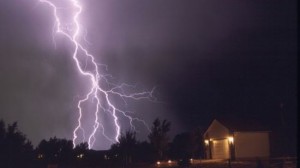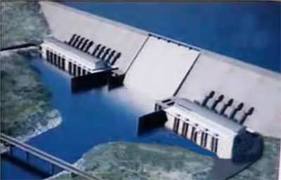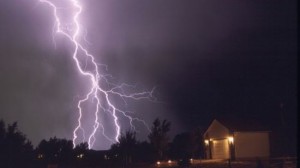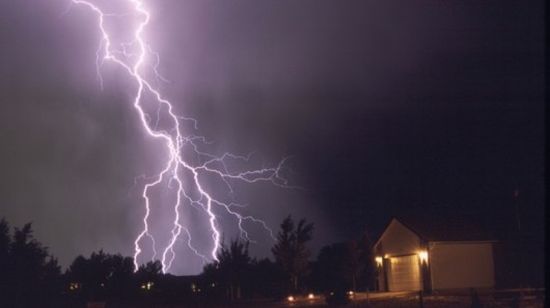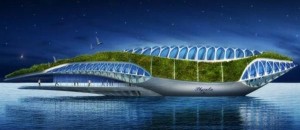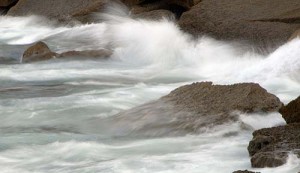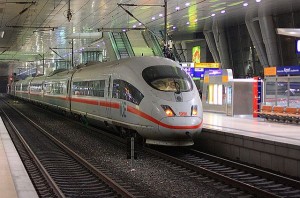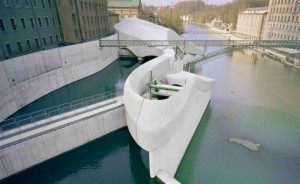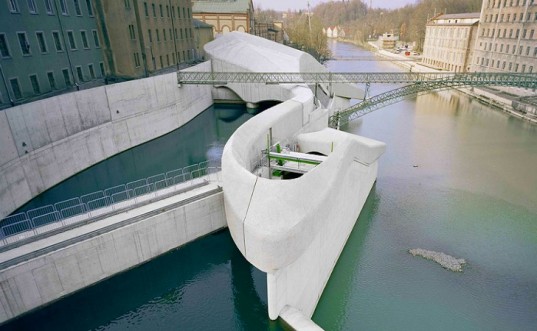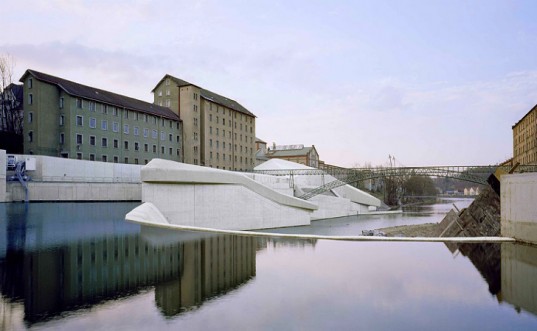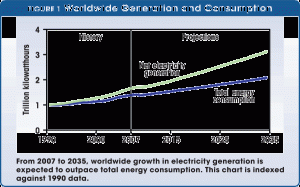Each year, the U.S. Energy Information Administration (EIA) develops an outlook for the international energy markets, including electricity. The International Energy Outlook 2010 (IEO2101), which was released last summer, projects markets through 2035. As part of its assessment of these markets, EIA analyzes policies and incentives intended to support generation sources, including hydropower. Here’s a look at the potential future of hydro generation worldwide and how current policies can affect utilization of this valuable resource.
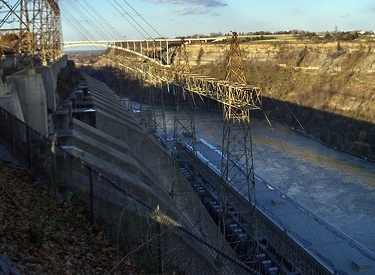
World Overview
IEO2010 predicts that world net electricity generation will increase by an average of 2.3% per year from 2007 to 2035 (see Figure 1). By comparison, net electricity generation grew 1.9% per year from 1990 to 2007.
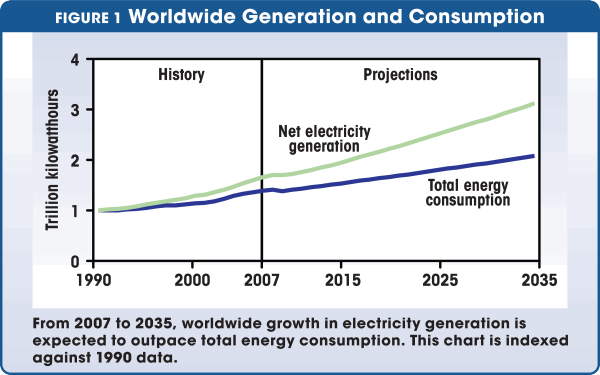
In general, projected generation growth in Organisation for Economic Co-operation and Development countries, with well-established electricity markets and mature consumption patterns, is slower than in non-OECD countries, where significant demand is unmet (see Figure 2). Electrification of off-grid areas plays a strong role in projected growth trends. In fact, the International Energy Agency estimates that 22% of the world’s population did not have access to electricity in 2008.1
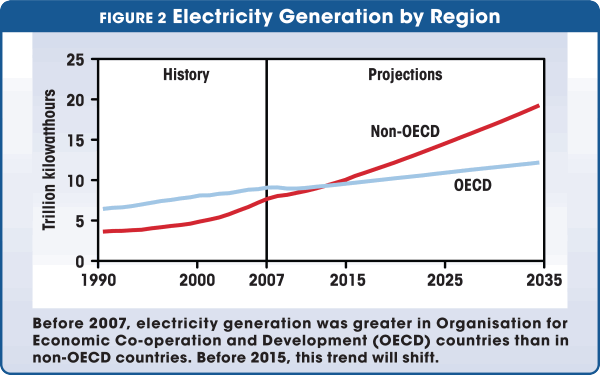
Non-OECD nations consumed 46% of the world’s total electricity supply in 2007. In 2035, non-OECD nations will account for 61% of world electricity use. Net electricity generation in non-OECD countries will increase by an average of 4.1% from 2007 to 2035, compared with only 1.1% per year among OECD nations.
The projection for total electricity generation in 2030 is 0.3% lower than it was in the 2009 outlook, largely because the impact of the recession was more severe than previously anticipated. Compared with IEO2009, the generation mix in 2030 in IEO2010 also changes. For example, liquids-fired generation is 11% lower than in IEO2009, natural gas and coal-fired generation are about 5% higher, nuclear generation is 9% higher, and renewable generation is 10% higher.
Renewable Generation
Renewable energy is the fastest-growing source of electricity in the IEO2010 reference case. Total generation from renewable resources will increase by 3% annually, and the renewable share of world electricity generation will grow from 18% in 2007 to 23% in 2035. Hydroelectricity leads the field. Of the 4.5 million GWh of new renewables added over the projection period, 2.4 million GWh are attributed to hydroelectric power.
Aside from hydro, most renewable technologies will not be able to compete economically with fossil fuels during the projection period, according to the report. Government policies or incentives often provide the primary economic motivation for construction of renewable facilities.
Changes in the mix of renewable fuels used differ between the OECD and non-OECD regions. In OECD nations, most economically exploitable hydro resources have been captured; with the exceptions of Canada and Turkey, there are few large hydro projects planned. Most renewable growth in OECD countries comes from non-hydro sources. Many OECD countries, particularly those in Europe, have government policies — including feed-in tariffs (FIT), tax incentives, and market share quotas — that encourage the construction of renewable facilities. A FIT requires utilities to purchase renewable electricity at a price higher than wholesale. This allows the renewable generator to achieve a positive return on investment despite the higher costs associated with these resources.
In non-OECD countries, hydropower is expected to be the predominant source of renewable electricity growth. Strong growth in hydro generation is expected in China, India, Brazil, and many nations in Southeast Asia, including Malaysia and Vietnam.
North America
North America accounts for the largest regional share of world electricity generation, with 27% in 2007. That share will decline as non-OECD nations experience fast-paced growth in demand. In 2035, North America will account for only 19% of the world’s net electric generation.
The USA is the largest consumer of electricity in North America. Generation will increase at an average annual rate of 0.8% from 2007 to 2035. Canada also has a mature electricity market, and its generation will increase by 1.2% per year over the same period. Mexico’s electricity generation will grow faster — averaging 3.2% per year through 2035 — reflecting the greater potential for expansion of the electric power infrastructure.
Generation from renewable sources in the USA will increase in response to requirements in more than half of the 50 states for minimum renewable generation or capacity shares. Renewable generation in the reference case is substantially higher than in recent projections, as the share of generation coming from renewable sources will grow from 8.5% in 2007 to 17% in 2035. The American Recovery and Reinvestment Act of 2009 directed $16.8 billion into energy efficiency and renewable energy and another $4 billion into loan guarantees for renewable energy. Federal subsidies for renewable generation are assumed to expire as enacted.
In Canada, generation from hydroelectricity will increase by 0.9% per year. In Ontario, the government plans to close its four coal-fired plants by December 31, 2014, and replace coal-fired generation with natural gas, nuclear, hydro, and wind. Coal provides about 19% of Ontario’s electric power. With the retirements, Canada’s coal generation declines from about 115 million GWh in 2007 to 97 million GWh in 2035.
The renewable share of Canada’s overall generation will remain roughly constant throughout the projection. Hydropower is expected to remain the primary source of electricity in Canada. In 2007, hydroelectric generation provided 59% of the country’s total generation; it falls to 54% in 2035.
Canada has several facilities planned or under construction. Hydro-Quebec is continuing construction of a 768 MW facility near Eastmain and a 150 MW facility at Sarcelle, both are expected to be fully commissioned by 2012. Others under construction include 1,550 MW Romaine River in Quebec and 200 MW Wuskwatim in Manitoba. Given Canada’s past experience and the commitments for construction, new hydro will add 22,910 MW of capacity in Canada between 2007 and 2035.
Mexico’s electricity generation will increase by an average of 3.2% annually from 2007 to 2035. The government recognizes the need for the country’s electricity infrastructure to keep pace with the anticipated fast-paced growth in demand. In July 2007, the government unveiled its 2007-2012 National Infrastructure Program, which included plans to invest $25.3 billion to improve and expand electricity infrastructure. As part of the program, the government set a goal to increase installed capacity by 8.6 GW from 2006 to 2012. The country is well on its way to meeting this target.
Renewable resources are the second fastest-growing source of generation in the projection, after natural-gas-fired generation. Mexico’s renewable generation will increase by 2.9% per year from 2007 to 2035. The country’s current renewable mix is split largely between hydro (73%) and geothermal (19%).
Two major hydro projects are under way: 750 MW La Yesca, scheduled for completion by 2012, and the planned 900 MW La Parota project, which may not be completed until 2018. In the IEO2010 reference case, hydropower will increase by 2.3% per year and account for more than 60% of Mexico’s total net generation from renewable energy sources in 2035.
OECD Europe
Electricity generation in OECD Europe will increase by an average of 1.1% per year in the IEO2010 reference case, from 3.4 million GWh in 2007 to 4.6 million GWh in 2035. Most growth in electricity demand is expected to come from those nations with more robust population growth (including Turkey, Ireland, and Spain) and from the newest OECD members (including the Czech Republic, Hungary, and Poland).
Renewable energy is OECD Europe’s fastest-growing source of electricity generation, anticipated to grow by 2.6% per year through 2035. However, the increase is almost entirely from non-hydropower sources, encouraged by some of the world’s most favorable renewable energy policies. In 2001, the EU set a binding target to produce 21% of electricity generation from renewable sources by 2010 and reaffirmed the goal of increasing renewable energy use with its December 2008 “climate and energy policy,” which mandates that 20% of total energy production must come from renewables by 2020. About 21% of the EU’s electricity came from renewable sources in 2007.
The IEO2010 reference case does not anticipate that all EU renewable energy targets will be met on time. Nevertheless, current laws are expected to lead to the construction of more renewable capacity than would have occurred in their absence. In addition, some countries provide economic incentives to promote the expansion of renewable electricity. Germany, Spain and Denmark have enacted FITs that last for 20 years after a project’s completion. As long as European governments support such price premiums for renewable electricity, robust growth in renewable generation is likely to continue.
OECD Asia
Total electricity generation in OECD Asia will increase by an average of 1% per year, from 1.7 million GWh in 2007 to 2.3 million GWh in 2035. Japan accounts for the largest share of electricity generation in the region today and continues to do so in the mid-term projection, despite having the slowest-growing electricity market in the region and the slowest among all OECD countries, averaging 0.5% a year.
The fuel mix for electricity generation varies widely among the three economies that make up OECD Asia (Japan, South Korea, and Australia/New Zealand). In Japan, natural gas, coal, and nuclear power make up the bulk of the electric power mix. The remaining portion is split between renewables and petroleum-based liquid fuels. Hydropower is projected to supply about 8% of total generation in 2035.
Non-OECD Europe and Eurasia
Total electricity generation in non-OECD Europe and Eurasia will grow at an average rate of 1.6% per year in the IEO2010 reference case, from 1.6 million GWh in 2007 to 2.5 million GWh in 2035. Russia, the largest economy in the region, accounted for about 60% of its total generation in 2007 and is expected to retain about that share throughout the period.
Renewable generation in non-OECD Europe and Eurasia, almost entirely from hydro facilities, will increase by an average of 1.3% per year. This is largely a result of repairs and expansions at existing sites, such as reconstruction of turbines in the 6,400 MW Sayano-Shushenskaya plant, which was damaged in an August 2009 accident. Repairs are expected to be completed no earlier than 2012.
New projects include the 3,000 MW Boguchanskaya station in Russia and the 3,600 MW Rogun Dam in Tajikistan. Construction began on Boguchanskaya in 1980 and on Rogun in 1976, but work ceased when the former Soviet Union experienced economic difficulties in the 1980s. Despite the recent recession, construction continues on Boguchanskaya, which is on track for completion by 2012. In May 2008, Tajikistan’s president announced construction had resumed on Rogun Dam, although it is still uncertain how the project will be financed.
Non-OECD Asia
Non-OECD Asia — led by China and India — has the fastest projected regional growth in electric generation worldwide, averaging 4.1% a year from 2007 to 2035. Although the recession will affect the region’s short-term economic growth, in the long term the economies of non-OECD Asia are expected to expand strongly, with corresponding increases in electricity demand. Total electricity generation in non-OECD Asia will rise by 42% from 2007 to 2015, from 4.8 million GWh to 6.8 million GWh. Electricity demand will increase by 56% between 2015 and 2025 and another 40% between 2025 and 2035. In 2035, net generation in non-OECD Asia will total 14.8 million GWh.
Electricity generation from renewable sources will grow at an average annual rate of 5%, increasing the renewable share of the region’s total generation from 15% in 2007 to 20% in 2035. Hydro facilities of all sizes contribute to the projected growth. Several countries have facilities planned or under construction, including Vietnam, Malaysia, Pakistan, and Myanmar. Almost 50 plants, with a combined 3,398 MW of capacity, are under construction in Vietnam’s Son La province, including the 2,400 MW Son La and 520 NW Houi Quang projects, both of which are scheduled for completion before 2015. Malaysia expects to complete its 2,400 MW Bakun Dam by 2011.
Substantial hydro development plans for Pakistan and Myanmar have been discounted in the IEO2010 reference case to reflect the two countries’ historical difficulties in acquiring foreign direct investment for infrastructure projects.
India plans to more than double its installed hydropower capacity by 2030. In its Eleventh and Twelfth Five-Year Plans, which span 2007 through 2017, India’s Central Electricity Authority has identified 40,900 MW of capacity that it intends to build. Although the IEO2010 reference case does not assume that all the planned capacity will be completed, more than one-third of the announced projects are under construction and are expected to be completed by 2020.
India’s federal government is attempting to provide incentives for hydro development. Legislation has been proposed to make private developers eligible over a five-year period for a tariff that would guarantee a fixed return on investment and allow generators to sell up to 40% of their electricity on the spot market. These federal intentions are being supported by state authorities. The government in Himachal Pradesh plans to commercialize a substantial portion of the state’s reported 21,000 MW of hydro potential, adding 5,700 MW of capacity before 2015, which would nearly double the existing capacity. At the end of 2009, 11 projects with a combined installed capacity of 4,400 MW were in development in Himachal Pradesh.
Similar to India, China also has many large hydro projects under construction. The final generator at 18,200 MW Three Gorges Dam went on line in October 2008, and Three Gorges Project Development Corp. plans to increase the project’s capacity to 22,400 MW by 2012. And work continues on 12,600 MW Xiluodu on the Jinsha River, which is scheduled for completion in 2015. China also has the world’s second tallest dam (at nearly 985 feet) under construction, as part of the 3,600 MW Jinping I project on the Yalong River. It is scheduled for completion in 2014 as part of a plan by Ertan Hydropower Development Co. to construct 21 facilities with 34,600 MW of capacity on the Yalong.
The Chinese government has set a 300 GW target for hydro capacity in 2020. The country has sufficient projects under construction or in development to meet the target. China’s aggressive hydro development plan is expected to increase hydroelectric generation by 3.9% per year, almost tripling the country’s total hydro generation by 2035.
Middle East
Electricity generation in the Middle East will grow by 2.5% per year, from 700,000 GWh in 2007 to 1.3 million GWh in 2035. The region’s young and growing population, along with a strong increase in national income, is expected to result in rapid growth in demand. Iran, Saudi Arabia, and the United Arab Emirates (UAE) account for two-thirds of the regional demand for electricity, and demand in these countries has increased sharply over the past several years. From 2000 to 2007, Iran’s net generation increased by 7.9% per year, Saudi Arabia’s by 6.1%, and UAE’s by 9.6%.
There is little economic incentive for countries in the Middle East to increase their use of renewable energy sources. The renewable share of the region’s total electricity generation will increase from 3% in 2007 to 5% in 2035 in the reference case. Despite this, there have been some recent developments in the region. Iran, which generated 10% of its electricity from hydro in 2009, is developing 94 new plants.
Africa
Demand for electricity in Africa will grow at an average annual rate of 2.6% in the IEO2010 reference case. Fossil-fuel-fired generation supplied 81% of the region’s electricity in 2007, and reliance on fossil fuels is expected to continue through 2035.
Generation from hydropower and other marketed renewable sources is expected to grow slowly. As they have in the past, non-marketed renewables are expected to continue providing energy to Africa’s rural areas; however, it is often difficult for African nations to find funding or international support for larger commercial projects. Plans for several hydro projects in the region have been advanced. Several of the announced projects are expected to be completed by 2035, allowing the region’s consumption of marketed renewable energy to grow by 2.2% per year from 2007 to 2035. For example, Ethiopia finished work on two hydroelectric facilities in 2009 — 300 MW Tekeze and 420 MW Gilgel Gibe II — and 460 MW Tana Beles began operating in 2010.
Central and South America
Electricity generation in Central and South America will increase by 2.1% per year in the IEO2010 reference case, from 1 million GWh in 2007 to 1.8 million GWh in 2035. The recent economic crisis lowered demand for electricity, especially in the industrial sector. In the longer term, however, the region’s electricity markets are expected to return to trend growth as economic difficulties recede.
The fuel mix for electricity generation in Central and South America is dominated by hydro, which accounted for nearly two-thirds of the total net electricity generation in 2007. Of the top seven electricity-generating countries, five — Brazil, Venezuela, Paraguay, Colombia, and Peru — generate more than 65% of their total electricity from hydropower.
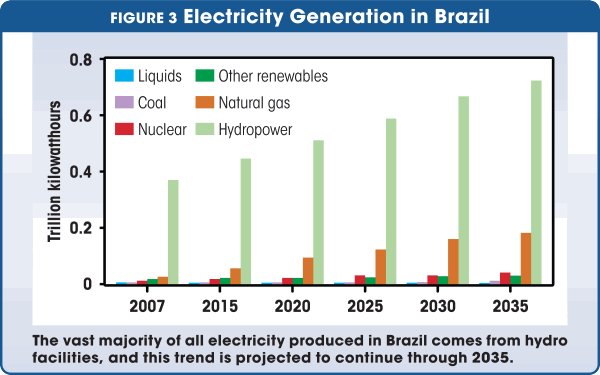
In Brazil, the region’s largest economy, hydropower provided almost 85% of electricity generation in 2007 (see Figure 3). In the Brazilian National Energy Plan for 2008-2017, the government set a goal to build 54 GW. However, most of these additions will be non-hydro capacity to diversify the country’s electricity generation fuel mix because of the risk of power shortages during times of drought.
Despite this, Brazil does plan to continue expanding its hydro generation over the projection period, including the construction of two plants on the Rio Madeira in Rondonia — 3,200 MW Santo Antonio and 3,300 MW Jirau. The two plants are scheduled for completion in 2012-2015. In the long term, electricity demand could be met in part by the proposed 11,200 MW Belo Monte project.
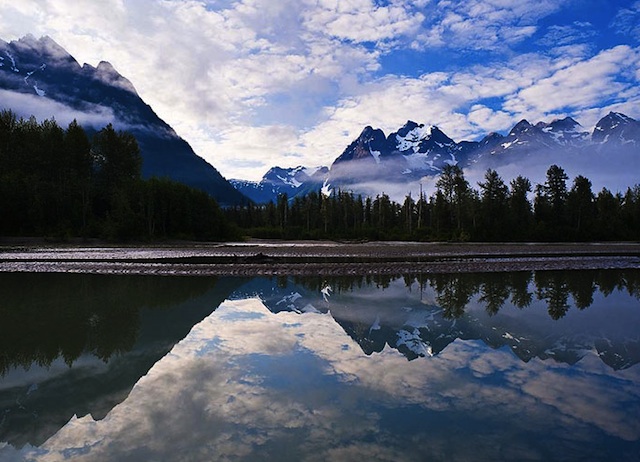
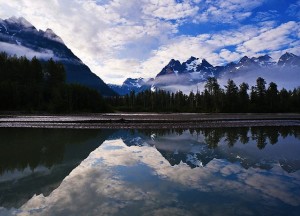
 Follow
Follow